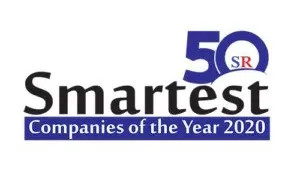R3 Stem Cell Offers Financing Options
For North American Residents, Wherever They Obtain Procedures!

The US Leader in Stem Cell Therapy, Now in Mexico. Treatments start at $3750 for 25 million stem cells!
Special Promo: Get an additional 25 BILLION Exosomes IV with treatments over 50 million cells!”
The US Leader in Stem Cell Therapy, Now in Mexico. Affordable treatments start at $3750 for 25 million stem cells!
Special Promo: Get an additional 25 BILLION Exosomes IV with treatments over 50 million cells!”
Amyotrophic lateral sclerosis, known as ALS, is a fatal, adult onset progressive disease of the nervous system affecting nerve cells in the spinal cord and brain. Currently there is no cure for ALS, and all too often doctors do not know why the disease occurs.
It’s also known as Lou Gehrig’s disease, in honor of the baseball player who developed it in the 1930’s.
Symptoms may include slurred speech, limb weakness, possibly muscle twitching. As the disease progresses, it can affect one’s ability to eat, speak and breathe. Typically the symptoms do not cause pain.
How Common is it?
In the US, about 5600 people are diagnosed with ALS each year. The total is about 30,000 cases with the average age at diagnosis of 55.
In the US, the incidence is 3/100,000 and in Europe it’s double at 6-7/100,000. Half of those with ALS live over 3 years, and 25% live five years after being diagnosed.
What Causes ALS?
Unfortunately the cause of ALS is not well understood. There may be a hereditary component in 10% of individuals.
The only environmental risk factor known is smoking. There are many theories about potential causes including mitochondrial dysfunction, free radical injury, autoimmune mechanisms, viral infection and others.
Diagnosing ALS is tough and there is not a definitive test for it. So ruling out other conditions is key, which may include a muscle biopsy, nerve conduction, spinal tap, etc.
Conventional treatments:
Riluzole, the only FDA-approved treatment for ALS, has only a slight positive effect on survival and function in some patients and poses a high financial burden on pa- tients and their families. Over the past 20 years, the results of most clinical trials on other drugs have been disap- pointing
Mesenchymal stem cells (MSC) can support motoneurons and surrounding cells, reduce inflammation, stimulate tissue regeneration and release growth factors. Stem cells are an exciting option for ALS as they can facilitate neuron replacement and regeneration. They can home in to sites of damage and stimulate tissue repair and regeneration.
The 2 main objectives are cellular replacement and neural protection. The beneficial effects of stem cells is most likely indirect and due to paracrine activity.
asyto derive and provide an abundant source of cells. In addition,they are not immunogenic, they release growth factors and haveimmune-suppressive features
Currently available cell therapies may take advantage of a variety of stem cells to modify disease pathophysiology [11], slow down or even halt the progression of disease, possibly by providing protective factors to surrounding cells, modulat- ing the host immune environment, inhibiting inflamma- tion, or even replacing injured cells [12–17].
Stem cell therapies may modify disease pathophysi- ology [11], slow down or halt the progression of disease, and even improve neuromuscular function and motor unit pathology, possibly by providing protective factors to surrounding cells, modulating the host immune environ- ment, inhibiting inflammation, or even replacing injured cells [12–17]
9 patients received BM MSC’s between 7 million and 156 million cells.
Intrathecal administration, no SAEs.
Followed for 4 years – 3 patients passed away. The other 4 were happy with the results.
Four patients show a significant slowing down of the linear decline of the forced vital capacity and of the ALS-FRS score. Our results seem to demonstrate that MSCs represent a good chance for stem cell cell-based therapy in ALS and that intraspinal injection of MSCs is safe also in the long term.
A study conducted by Prabhakar et al (2012) evaluated the influence of autologous BM-MSC on ALS disease course. Ten patients underwent a lumbar puncture with stem cell administration and no adverse effects were observed. The authors concluded that MSCs administration led to disease stabilization in 1-year period of follow-up since no significant deterioration in ALS Functional Rating Scale was noted (Prabhakar et al., 2012).
Oh et al. (2015) conducted an open label phase I clinical trial with intrathecal injections of autologous BM-MSC. Seven out of eight patients received 2 doses within1 month. No serious adverse effects were noted during 12 months of follow-up. Adverse drug reaction was noted in six patients (pyrexia, pain and headache). The course of the disease seemed to be slower after the therapy in comparison to the previous decline (Oh et al., 2015).
2020 Study out of Poland 67 patients risk of death was decreased in patients treated with MSCs versus the paired control group by 70% Median overall survival was almost twice longer in MSC patients than in the reference group (1183 days vs. 640 days
Our study yielded highly encouraging results when it comes to WJ-MSC administration in all subgroups distinguished based on demographical and clinical factors. treatment with MSC substantially reduces the rate of progression and yields a twofold extension of survival in those who achieved a positive response to the first administration in comparison to the reference subject.
Israeli study with 12 patients.
On the basis of an individualized per patient analysis, most of the IT- or IT+IM–transplanted patients (89% at 3 months [n = 16] and 87% at 6 months [n = 13]) were defined as responders (having a slower progression rate after treatment compared with the pretreatment run-in period) of ALS-FRS-R score or FVC.
The results suggest that IT and IM administration of MSC-NTF cells in patients with ALS is safe and provide indications of possible clinical benefits
64 randomized pateints
1 million stem cells/kg
33 were allocated to receive BM-MSCs with riluzole treat- ment (MSC group) and 31 received riluzole alone (control group).
The common AEs in the MSC group at 6 months were influenzalike illness (n = 7), back pain (n = 5), and musculoskeletal pain (n = 5).
2 repeated treatments with intrathecal
BM-MSCs (1 × 106 cells per kg with a 26-day interval) showed significant therapeutic benefit with safety in patients with ALS.
The decline in ALSFRS-R was signifi- cantly reduced in the MSC group in comparison to the con- trol group after 4- and 6-month follow-up. ALSFRS-R looks at speech, salivation, swallowing, handwriting, walking, dressing, climbing stairs breathing.
In conclusion, this study provides preliminary evi- dence that 2 repeated intrathecal, autologous BM-MSC injections are safe and effective in reducing the decline of ALSFRS-R for at least 6 months.
The Response To Our Mexico Stem Cell Programs Have Been OVERWHELMING!
Make Sure To Reserve Your Spot Now By Calling Us At (888) 988-0515.
Our Experienced Providers Will Perform A Free Phone Consultation To See If You Are A Candidate.

About R3 Stem Cell Mexico
Follow Us
Quick Links
Disclaimer
Stem cell therapy is considered experimental and is regulated by the U.S. Food and Drug Administration (FDA), but it is not FDA-approved. R3 Stem Cell does not offer stem cell therapy as a cure for any medical condition. No statements made on this site have been evaluated or approved by the FDA. This site does not provide medical advice. All content is for informational purposes only and is not a substitute for professional medical consultation, diagnosis, or treatment. Reliance on any information provided by R3 Stem Cell, its employees, others appearing on this website at the invitation of R3 Stem Cell, or other visitors to the website is solely at your own risk. R3 Stem Cell does not recommend or endorse any specific tests, products, procedures, opinions, or other information that may be mentioned on this website. R3 Stem Cell is not responsible for the outcome of your procedure. The FDA considers stem cell therapy experimental at this point.
Contact Us








Copyright © 2016 – 2025 R3 Stem Cell